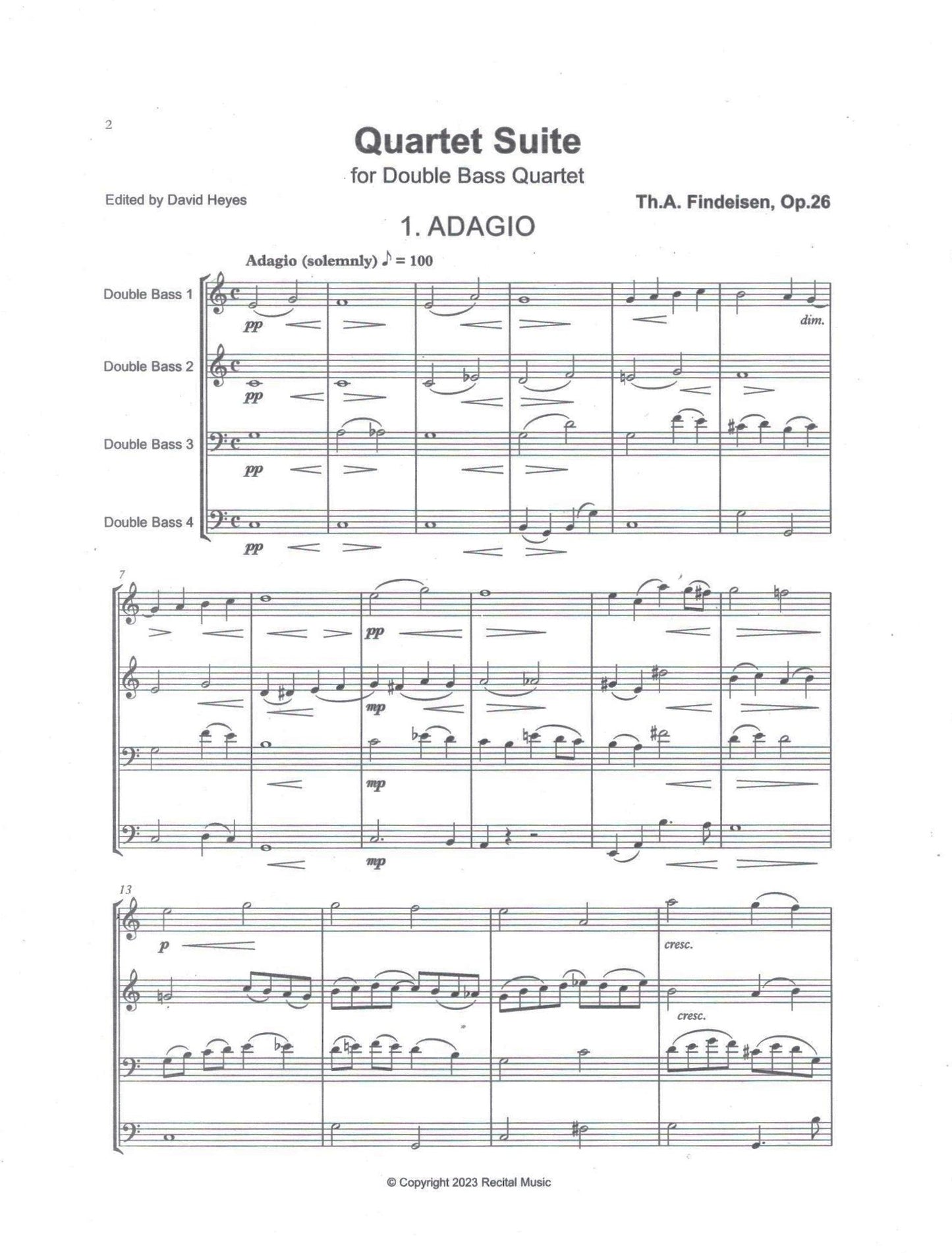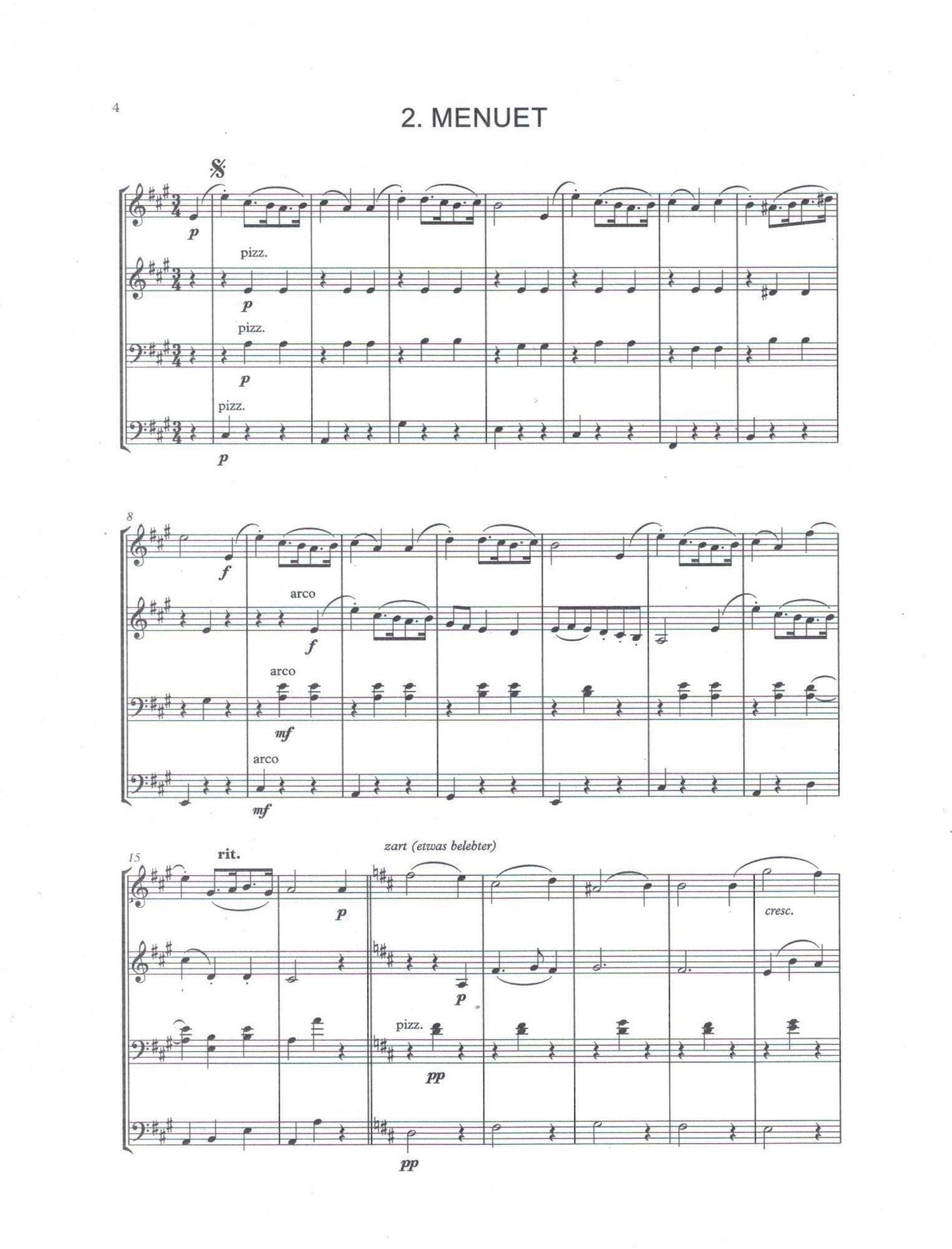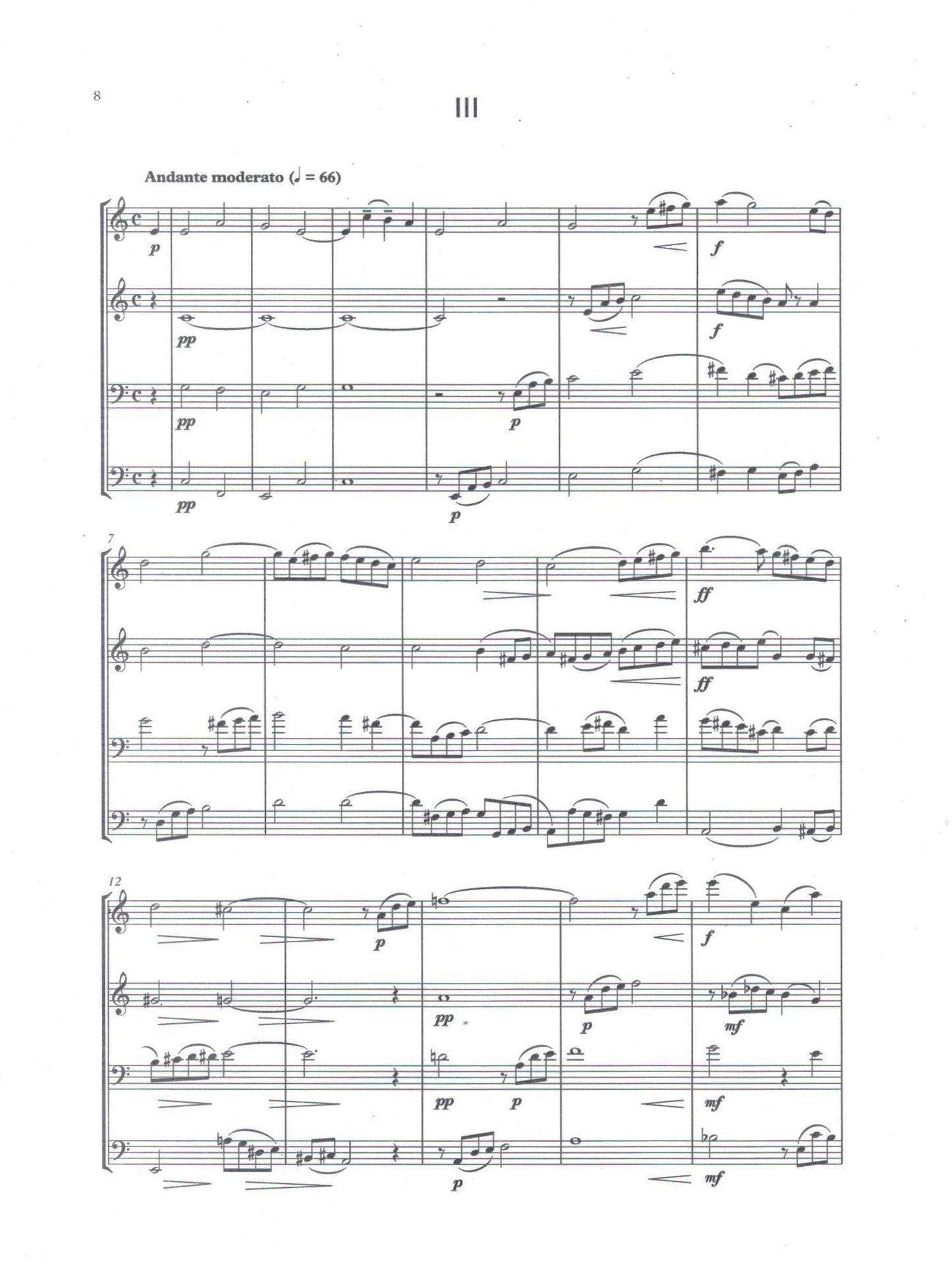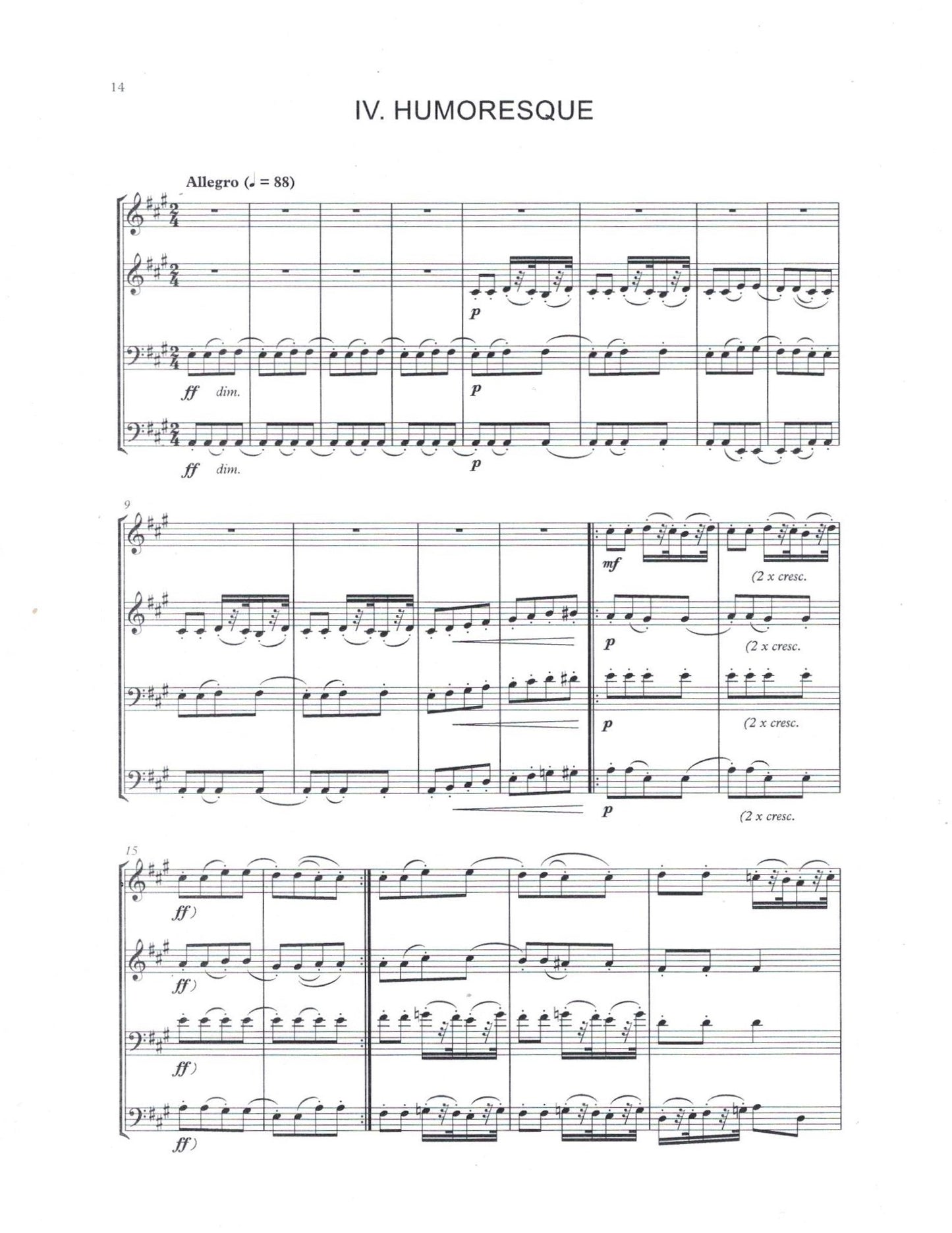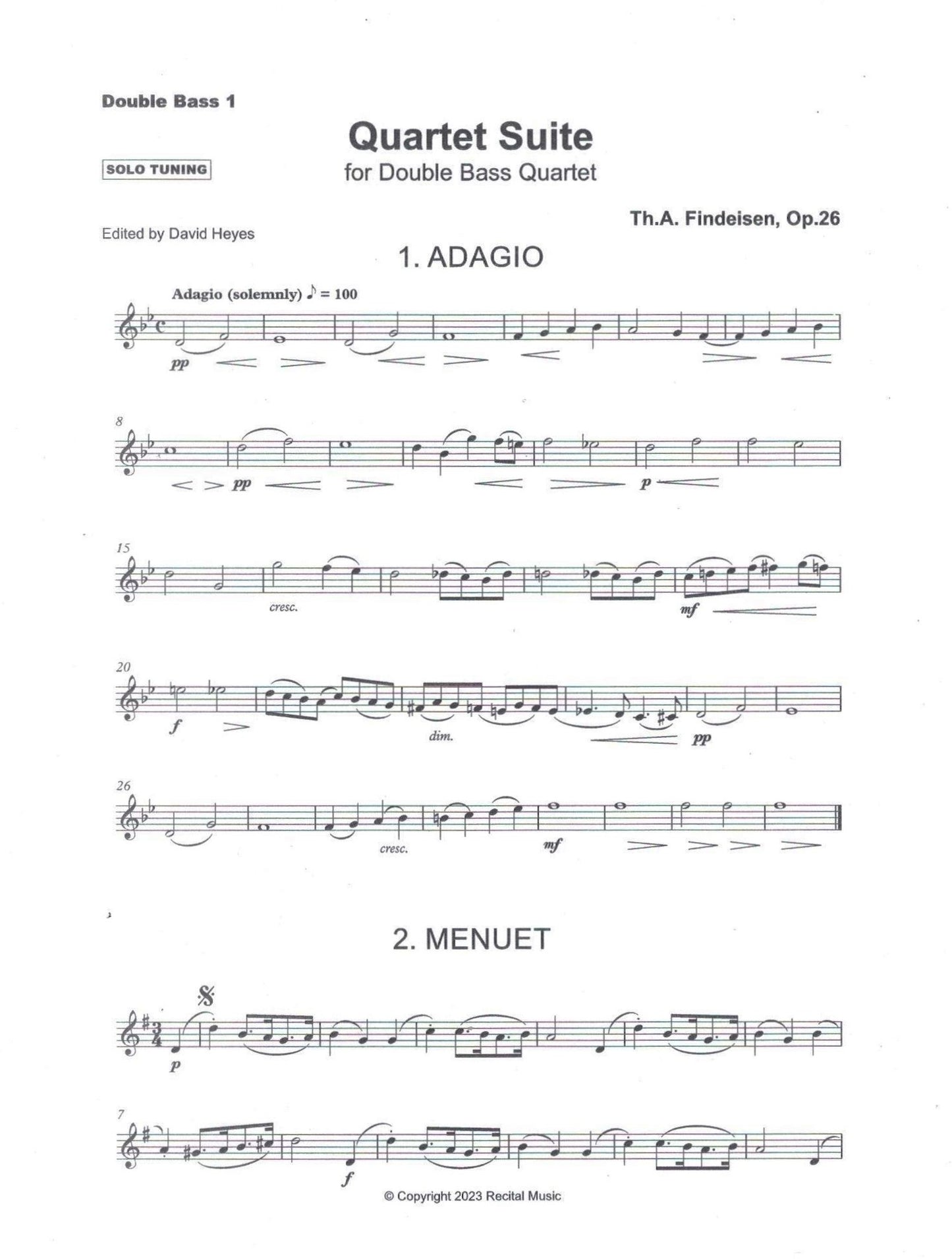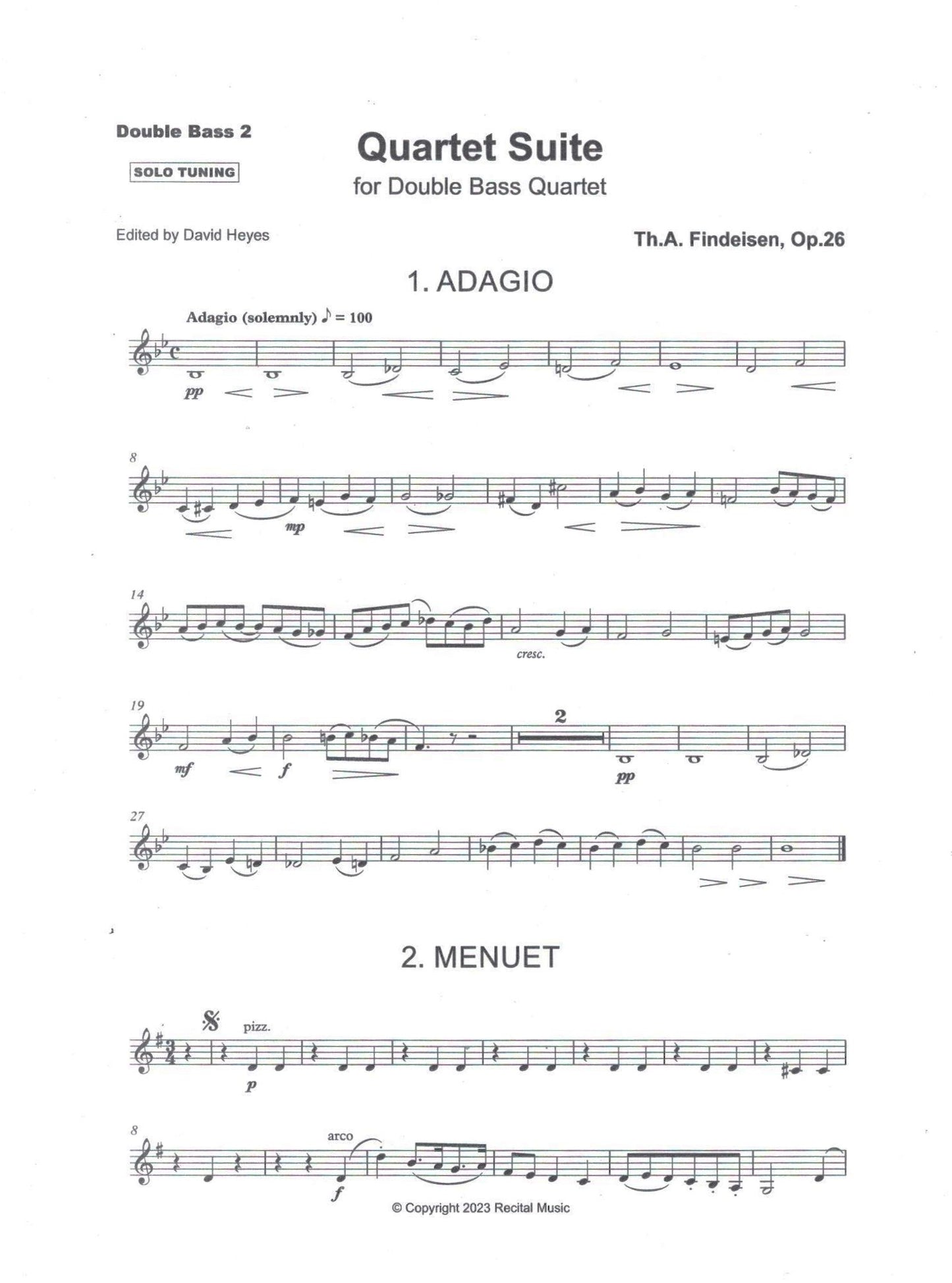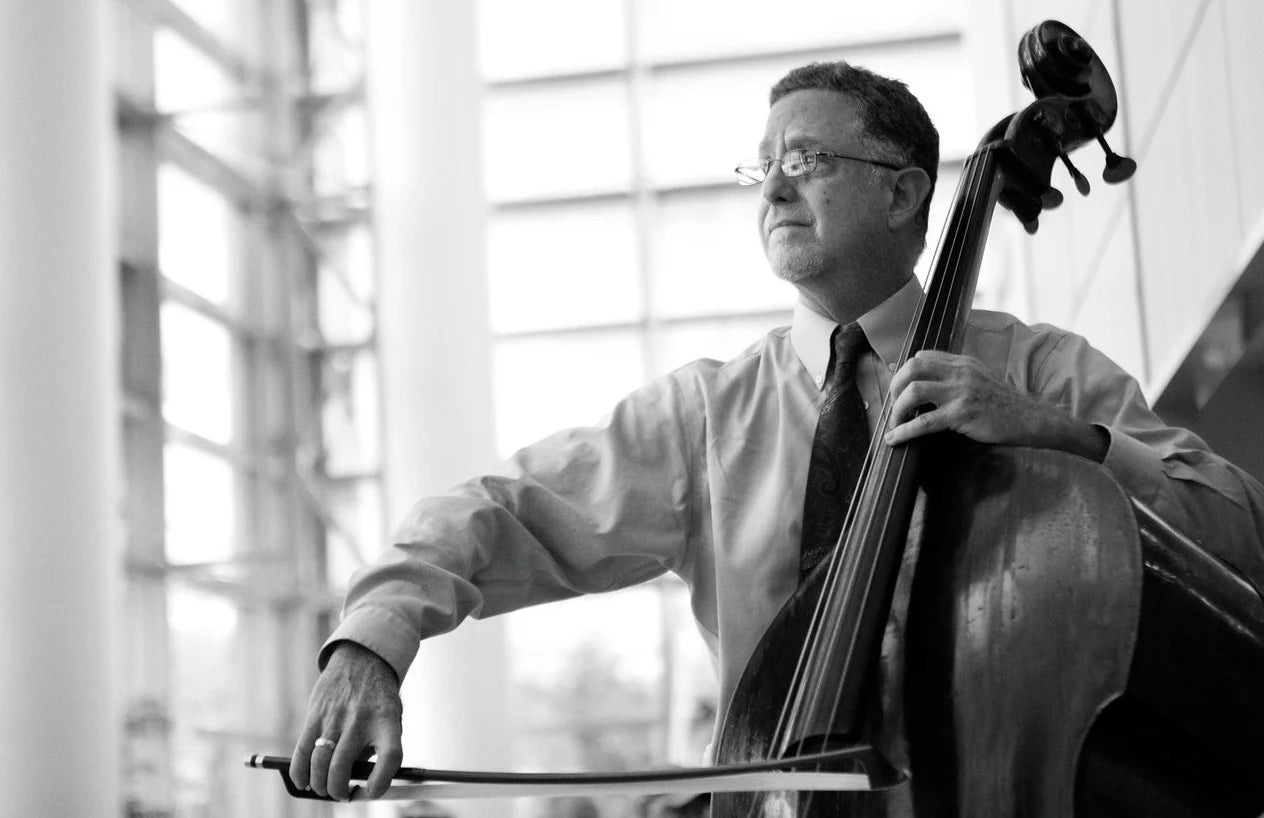David Heyes
Th.A. Findeisen: Quartet Suite Op.26 for double bass quartet (ed. by David Heyes)
Th.A. Findeisen: Quartet Suite Op.26 for double bass quartet (ed. by David Heyes)
Couldn't load pickup availability
About the Composition
Findeisen’s Quartet Suite Op.26 was probably composed in 1933/34 and is aimed at the advanced quartet. In four contrasting movements, the composer uses two tunings - solo tuning for basses 1 & 2 and orchestral for basses 3 & 4 - exploiting the entire range of the double bass.
Findeisen combined his skills as a bassist and composer to produce four characteristic and characterful movements, described by Klaus Stoll as 'in the tradition of Max Reger', which are inventive and beautifully written. The spacing between the players ensures a clarity and openness, which isn't always the case with bass quartets. Bass 1 plays in high treble clef throughout, bass 4 remains in bass clef, acting as the foundation of the group, and basses 2 and 3 are somewhere between the two. The first movement (Adagio), in C major, is chorale-like and slow moving, and a slightly more animated middle section contrasts the stillness and stately outer sections. A Menuett & Trio follow (A major/D major) with a syncopated Viennese waltz theme divided between all four players. The lyrical and effective dance-style is succeeded by a more robust and Germanic trio which partners basses 1 and 2 with basses 3 and 4.
The third movement (Andante moderato) is a chromatically inspired 'song without words' with much contrapuntal interplay between all four players. A range of moods are explored and there is something of interest for each bass. The movement begins and ends in C major, but Findeisen subtly and successfully sidesteps through many modulations and tonalities to maintain the interest. The last movement, subtitled Humoreske (Allegro), is lively and rhythmic with a strong momentum and drive. The final section, marked Presto (wild), is fast and frenetic pushing the piece to a dramatic, exciting and successful conclusion. Findeisen certainly knew how to write for multiple basses and there are musical and technical challenges throughout - but this is certainly not for the faint-hearted or timid quartet. Basses 1 and 2 play exclusively in treble clef and require players who are confident and experienced in the higher solo register. Bass 3 tends to drift between bass and treble clefs, with a few harmonics thrown in for good measure, but is primarily in bass clef, and bass 4 is the 'engine room' of the quartet and remains in bass clef throughout and descends to low C. The low notes can be transposed an octave higher if necessary.
Without access to the original manuscript, this edition is based on the first publication from 1934. There were many discrepancies between the printed score and parts and the editor has aimed to create a new playable edition which hopefully reflects the composer’s intentions.
About the Composer
German bassist-composer, Theodor Albin Findeisen (1881-1936). Findeisen studied double bass with František Simandl (1840-1912) at the Vienna Conservatoire and subsequently at the Leipzig Conservatoire (1904-07) with Oswald Schwabe (1846-1909). He became Principal Bass in Breslau in 1907, from 1920 was the First Solo Bass with the Leipzig Gewandhaus Orchestra, and in 1922 he was appointed Professor of double bass at Leipzig Conservatoire. He held both positions in Leipzig until his death on 3 March 1936. Findeisen was influential as a teacher and produced a five-volume Method (Der Lehrer des Kontrabass-Spieles), alongside books of studies, and his work is the basis for the modern German school of bass playing. Findeisen also composed a number of concert works for double bass, few of which are performed today, but his Quartet-Suite Op.26 for double bass quartet deserves to be better known. It was first published in 1934 and is dedicated to 'Meinen Kollegen M. Schultz, W. Kilian & O. Martersteig', three of his orchestral colleagues in Leipzig, and it is assumed that the composer would have played the top part. He follows the model of Bernhard Alt's Suite and uses two tunings - solo for basses 1 and 2, and orchestral for basses 3 and 4 - and the first edition by Verlag Carl Merseburger (Leipzig) gives the title as 'Quartettsuite fur 4 Celli od, 4 Kontrabasse' and with a duration of about 18 minutes.

